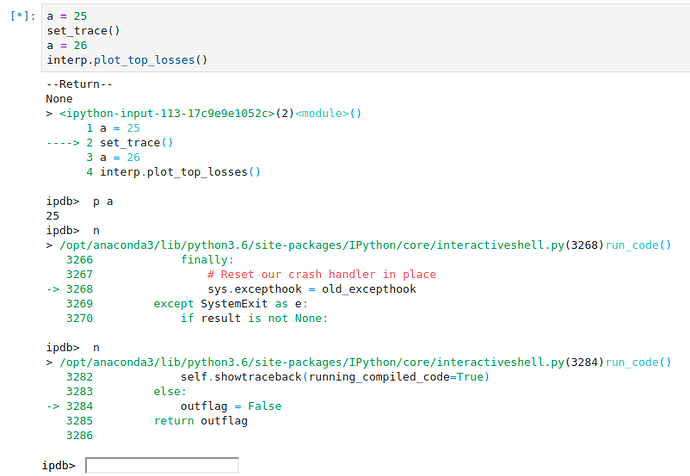If you have used existing fastai image from market place then probably this is not required.
fastai uses conda for installing libs.
You need to install version 1.0.14:
conda install -c fastai fastai
Do you have the latest fastai library (1.0.14)?
No. A git pull just updates the your local folder with the repository’s contents. We need to update the library which is a package installed in Anaconda. Even if you have the latest fastai repository in your computer, you may have an old version library installed. You either need to run the command I suggested if you are using Anaconda or if using pip:
pip install fastai --upgradeI am currently working on a Happy whale dataset. This challenge gives us training set with 3000+ labels of whales. Task is to make prediction for test set. After looking at the submission file .csv I can see that this might be multi-class prediction(I am not sure what its called multi-class or multi-label) i.e. each test image might have multiple class prediction probabilities. How can I achieve this task? I know there are some changes is to be made in the final output layer (adding non-linear functions) like using softmax or sigmoid but I am not sure which one to use. After getting these probabilities we need to find like top X% of those and get’s those top X% labels and assign that to given input test Image. Is my approach correct towards this problem?
It’s basically a Multi-Label Classification… @ keyurparalkar
Check this from past versions Kaggle's Whale Competition (might help)
Thank you it worked. But maybe we need to change it in the http://course-v3.fast.ai/update_gcp.html the command to :
sudo: sudo /opt/anaconda3/bin/conda install -c fastai fastai
because in there is still says : “sudo /opt/anaconda3/bin/conda update fastai”. SO when you follow the steps mentioned we do a git pull and then the update command which says all requirements already satisfied. (meaning it doesn’t update the repo). Please check this once
Changing the “update fastai” to install -c fastai fastai worked for me.
You can simply do learn.load(‘my-model’) and use it for prediction.
Unfreezing the models allows all the layers to be trained.
On a machine with 1060 Ti 6 GB GPU , the unfreezed model trains in under a minute and a half for 1 epoch while the freezed model takes a less than a minute.
Shouldn’t the un-freezed model taken a much longer time given it has many more trainable parameters.
To make an inference you need to call learn.eval() first (this removes the dropout) and then learn.predict().
To quote Jeremy, softmax likes to to pick just one thing… which makes it a good choice for multi-class classification. Sigmoid one the other hand wants to know where everything is between -1 to +1.
I am get KeyError: 'content-length' when I try different datasets listed in the Image Classification section at the the link below:
Workflow
- Copy path from the download link.
- Use this path in
untar_data
Example
path = untar_data('https://s3.amazonaws.com/fast-ai-imageclas/mnist_png.tgz')
Downloading https://s3.amazonaws.com/fast-ai-imageclas/mnist_png.tgz
---------------------------------------------------------------------------
KeyError Traceback (most recent call last)
<ipython-input-96-f7e93772cc8e> in <module>
----> 1 path = untar_data('https://s3.amazonaws.com/fast-ai-imageclas/mnist_png.tgz')
2 path
~/anaconda3/envs/fastai/lib/python3.7/site-packages/fastai/datasets.py in untar_data(url, fname, dest)
107 "Download `url` if doesn't exist to `fname` and un-tgz to folder `dest`"
108 dest = Path(ifnone(dest, _url2path(url)))
--> 109 fname = download_data(url, fname=fname)
110 if not dest.exists(): tarfile.open(fname, 'r:gz').extractall(dest.parent)
111 return dest
~/anaconda3/envs/fastai/lib/python3.7/site-packages/fastai/datasets.py in download_data(url, fname)
101 if not fname.exists():
102 print(f'Downloading {url}')
--> 103 download_url(f'{url}.tgz', fname)
104 return fname
105
~/anaconda3/envs/fastai/lib/python3.7/site-packages/fastai/core.py in download_url(url, dest, overwrite)
155 if os.path.exists(dest) and not overwrite: return
156 u = requests.get(url, stream=True)
--> 157 file_size = int(u.headers["Content-Length"])
158 u = u.raw
159
~/anaconda3/envs/fastai/lib/python3.7/site-packages/requests/structures.py in __getitem__(self, key)
50
51 def __getitem__(self, key):
---> 52 return self._store[key.lower()][1]
53
54 def __delitem__(self, key):
KeyError: 'content-length'
Check this out link which meant use this untar_data(URLs.MNIST_SAMPLE)
MNIST_SAMPLE
in short, the lib uses MNIST_SAMPLE , which has a different format.
IPython Debugger gets lost in internal code after set_trace
After pressing n(ext) it just keeps going down the rabbit hole of its internal functions and I cannot get past set_trace().
you need to remove the tgz at the end of string to not get that error.
use this —> untar_data(‘https://s3.amazonaws.com/fast-ai-imageclas/mnist_png’)
Thanks but that wasn’t really what I meant. I wanted to move my trained model to another CPU only machine to perform predictions. The learn.load method can only be called on an instantiated learner object. In order to instantiate a learner I have to provide it with a DataBunch and an architecture as a minimum. I have hacked around this with the following:
import torch
from fastai.vision import get_image_files, ImageDataBunch, get_transforms, ConvLearner, models, open_image
from pathlib import PosixPath
path_data = PosixPath('/Users/jeremyblythe/Downloads/dummy')
fnames = get_image_files(path_data)
pat = r'/([^/]+)_\d+.jpg$'
data = ImageDataBunch.from_name_re(path_data, fnames, pat, ds_tfms=get_transforms(), size=224, bs=10, flip_lr=False)
learn = ConvLearner(data, models.resnet34)
learn.model.load_state_dict(torch.load('/Users/jeremyblythe/Downloads/stage-2.pth', map_location='cpu'))
img = open_image('/Users/jeremyblythe/Downloads/test-A_29.jpg')
p = img.predict(learn)
data.classes = ['B', 'A', 'E', 'Y']
print(data.classes[p.argmax()])
My dummy directory contains one sample of each class. Note that when loading a model trained on a GPU machine into a CPU machine you cannot use learn.load as map_location='cpu' is required. Also note that you need to restore data.classes to the match the order from the original training.
The above hack has allowed me to train on a p2.xlarge in AWS and then bring the model back to my Mac to run predictions.
I think I saw a couple other people asking how to do something like this, @matwong and @danielegaliffa (questions G,H perhaps?) - I’m not saying this is a nice way to do it but it seems to work.
Wondering if anyone has a better, less hacky, way to do this?
Can anyone tell me how to download a dataset from the UCI ML repository and use it? I have created a topic for it: How to download a dataset from a URL?
Any help is appreciated.
How do I get the number of images in each class, from the ImageDataBunch object.
Many thanks for the reminder - fixed now.

